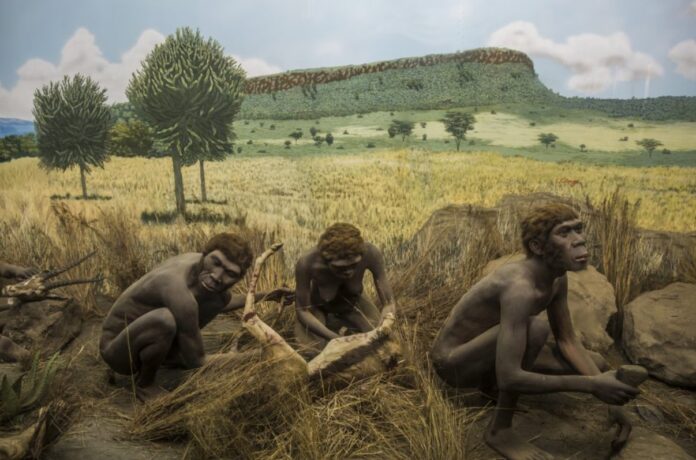The story of human evolution is a captivating narrative that spans millions of years, from the emergence of our earliest ancestors to today’s complex societies. This article delves into the remarkable journey of Homo sapiens, exploring the key milestones, adaptations, and cultural innovations that have shaped our species into the diverse and resilient beings we are today.
I. The Dawn of Homo Sapiens:
Ancestral Roots:
The journey begins in Africa, where our ancestors, belonging to the genus Homo, gradually evolved over millions of years. Homo sapiens, characterized by our large brains and upright posture, emerged around 300,000 years ago.
Tool Use and Innovation:
One of the defining features of early Homo sapiens was our ability to create and use tools. Stone tools, shaped for cutting and hunting, marked a significant step in our evolutionary journey, reflecting our growing cognitive skills.
II. Migration Out of Africa:
Out-of-Africa Theory:
Homo sapiens embarked on a meaningful journey out of Africa, spreading across the globe. The Out-of-Africa theory suggests that modern humans migrated to Eurasia, Oceania, and the Americas, adapting to diverse environments and climates.
Adaptations to New Environments:
As humans migrated to different regions, they underwent adaptations to survive in varied landscapes. Skin pigmentation, for example, evolved in response to sunlight intensity, with darker skin protecting against harmful UV radiation in equatorial regions.
III. Cognitive Revolution and Cultural Advancements:
The Cognitive Leap:
Homo sapiens experienced a cognitive revolution marked by an unprecedented surge in intellectual and creative capacities. This period saw the development of language, symbolic thinking, and the ability to share complex ideas, laying the foundation for cultural evolution.
Art and Symbolism:
Evidence of early artistic expression, such as cave paintings and symbolic artifacts, highlights the emergence of abstract thought and cultural symbolism. These artifacts offer insights into the spiritual and creative dimensions of early Homo sapiens.
IV. Agricultural Revolution and Settlements:
Transition to Agriculture:
The shift from a hunter-gatherer lifestyle to settled agriculture marked a profound change in human societies. The Agricultural Revolution, which began around 10,000 BCE, led to the cultivation of plants and the domestication of animals, paving the way for complex civilizations.
Formation of Societies:
Settlements enabled the formation of larger, more structured societies. The development of agriculture facilitated surplus food production, allowing for population growth, trade, and the specialization of labor in areas like writing, art, and governance.
V. Technological Advancements and Global Connectivity:
Iron Age and Metalworking:
The Iron Age brought about advancements in metalworking technologies, leading to the creation of more durable tools and weapons. This period laid the groundwork for the development of complex civilizations and the rise of empires.
The Silk Road and Maritime Exploration:
The Silk Road, a network of trade routes, connected East and West, fostering cultural exchange and economic development. Maritime exploration, exemplified by figures like Zheng He and Christopher Columbus, expanded global connectivity, shaping the modern world.
VI. Industrial Revolution and Technological Innovation:
Mechanization and Urbanization:
Starting in the 18th century, the Industrial Revolution marked a transformative era characterized by mechanization, urbanization, and significant technological advancements. Steam engines, factories, and new modes of transportation revolutionized production and daily life.
Information Age and Digital Revolution:
The 20th century ushered in the Information Age with the rapid development of computers and the Internet. The digital revolution has transformed communication, commerce, and access to information, reshaping how societies function globally.
VII. The Anthropocene and Future Challenges:
Impact on the Planet:
The Anthropocene epoch reflects the significant impact of human activities on the Earth’s geology and ecosystems. Climate change, deforestation, and the depletion of natural resources pose unprecedented challenges that require global cooperation and sustainable solutions.
Technological Challenges and Ethical Considerations:
As technology advances, ethical considerations surrounding artificial intelligence, genetic engineering, and biotechnology become increasingly complex. Humanity faces the responsibility of navigating these challenges with foresight and moral principles.
Conclusion:
The journey of Homo sapiens is a testament to the adaptability, creativity, and resilience of our species. From humble beginnings in Africa to today’s complex, interconnected societies, humans have continually evolved and shaped the world around them. As we stand on the precipice of the future, the remarkable journey of Homo sapiens serves as a reminder of our collective responsibility to safeguard our planet, preserve cultural diversity, and navigate the challenges that lie ahead with wisdom and compassion.





































